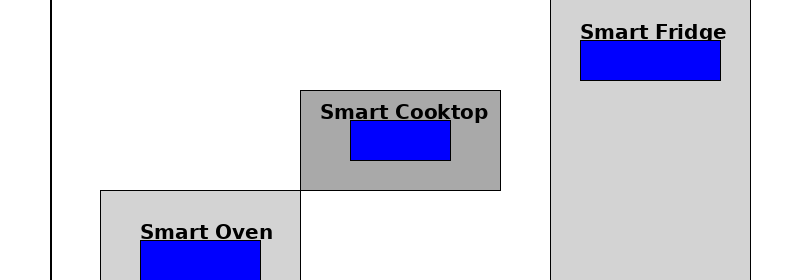Help keep this website stay online by supporting us in ways you can!
cutting-edge kitchen gadgets
The Cosori 6-Quart Pressure Cooker, a 9-in-1 multi-functional wonder, is designed to expedite cooking times by up to 70% compared to traditional methods.
REVIEW
V . George
3/8/20243 min read
Cooking Smarter


Cosori: Redefining Culinary Innovation
Cosori, an acronym for "Cooking Smarter, Originality & Inspiration," has been redefining the kitchen appliance market since its establishment in 2017. Specializing in cutting-edge kitchen gadgets, their latest offerings, the Cosori 5.0-Quart Rice Cooker and the Cosori 6-Quart Pressure Cooker, stand as prime examples of their commitment to revolutionizing the home cooking experience.
Cosori 5.0-Quart Rice Cooker:
The Cosori 5.0-Quart Rice Cooker is an 18-in-1 marvel, boasting functionality that extends far beyond its name. It promises perfect rice with every use and offers a seamless, easy-to-clean design, making it an indispensable addition to any kitchen. What truly sets this appliance apart is its versatility, not just limited to cooking rice but expanding to various functions like grains, oats, steam, sauté, slow cook, and more. With 50 recipes in tow, it becomes an all-in-one solution catering to the diverse needs of daily meals.
Cosori 6-Quart Pressure Cooker:
The Cosori 6-Quart Pressure Cooker, a 9-in-1 multi-functional wonder, is designed to expedite cooking times by up to 70% compared to traditional methods. Crafted with high-quality materials and equipped with 12 safety features, it ensures stress-free venting and offers a seamless cooking experience. With 13 presets and the ability to perform tasks such as pressure cooking, slow cooking, sautéing, and even acting as a sous vide and sterilizer, it becomes an indispensable ally in the kitchen.
These products don't just promise efficiency but also cater to the diverse needs of consumers, aiming to simplify the cooking process while elevating the culinary experience.
Cosori's commitment to quality, functionality, and innovation shines through its 5.0-Quart Rice Cooker and 6-Quart Pressure Cooker. These appliances embody the brand's dedication to redefining home cooking, offering versatile solutions that cater to modern culinary demands. With their sleek designs, cutting-edge functionalities, and promise of safety, Cosori continues to lead the charge in providing indispensable kitchen appliances.
The Evolution of Cooking: Comparing Traditional Methods with Modern Techniques
Cooking, an age-old human practice, has witnessed a remarkable evolution over the centuries. From the simplicity of open fires and manual tools to the sophistication of modern kitchen appliances, the way we prepare our meals has undergone a significant transformation. In this article, we'll explore the advantages and disadvantages of traditional cooking methods and compare them with the benefits and drawbacks of their modern counterparts.
Traditional Cooking Methods:
Advantages:
1. Cultural Heritage and Connection:
- Traditional cooking methods often carry a deep cultural significance, connecting individuals to their heritage. The act of using age-old techniques can foster a sense of community and tradition.
2. Low Environmental Impact:
- Traditional cooking methods, such as open flame or wood-fired stoves, can have a lower environmental impact compared to modern appliances. These methods utilize natural resources and may be more sustainable in certain contexts.
3. Hands-on Experience:
- Cooking over an open flame or using manual tools provides a hands-on experience that allows for a greater connection to the ingredients. Traditional methods often require more physical effort, providing a more intimate cooking process.
Disadvantages:
1. Time-Consuming:
- Traditional cooking methods can be time-consuming, requiring meticulous attention and longer preparation and cooking times. This may not align with the fast-paced lifestyles of the modern world.
2. Inconsistent Results:
- Achieving consistent results can be challenging with traditional methods, as factors like temperature control and cooking times may vary, leading to unevenly cooked dishes.
3. Limited Versatility:
- Traditional methods may lack the versatility offered by modern appliances. Cooking options are often limited, and certain techniques may be impractical or impossible.
Modern Cooking Methods:
Advantages:
1. Efficiency and Time-Saving:
- Modern kitchen appliances, such as electric stoves, ovens, and microwaves, are designed for efficiency and time-saving. Cooking times are often significantly reduced, catering to the demands of busy schedules.
2. Precision and Control:
- Modern devices provide precise temperature control and cooking settings, ensuring consistent results. This level of control is particularly beneficial for delicate recipes or specialized cooking techniques.
3. Versatility and Convenience:
- The wide range of functions in modern appliances allows for versatile cooking, from baking and roasting to steaming and sautéing. This versatility provides convenience and flexibility in meal preparation.
Disadvantages:
1. Environmental Impact:
- Many modern cooking appliances rely on electricity or gas, contributing to environmental concerns. The production and disposal of these appliances also have ecological implications.
2. Dependency on Technology:
- The reliance on modern technology for cooking may lead to a loss of traditional culinary skills. In the event of power outages or equipment malfunctions, individuals may face challenges in preparing meals.
3. Cost and Maintenance:
- Acquiring and maintaining modern kitchen appliances can be costly. Repairs and replacements may add to the overall expense, making them less accessible to some individuals.
Conclusion:
The choice between traditional and modern cooking methods ultimately depends on individual preferences, cultural values, and lifestyle considerations. While traditional methods offer a connection to heritage and a unique cooking experience, modern techniques provide efficiency, precision, and convenience. Striking a balance between the two approaches may present an opportunity to appreciate the richness of culinary traditions while embracing the advantages of modern innovation. As the culinary landscape continues to evolve, the key lies in choosing methods that best align with one's values and the demands of contemporary living.

